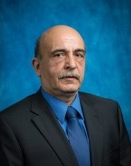- Speaker
- Prof. John Ekaterinaris
- Embry-Riddle Aeronautical University, USA
- Abstract
Discontinuous Galerkin (DG) discretizations possess features making them attractive for high-resolution computations in three-dimensional flows that include strong discontinuities and embedded complex flow features. Key elements, which could make the DG method more suitable for computations of such time-dependent flows in complex domains, is use of adaptive mesh refinement (AMR) and application of limiting procedures that ensure sharp and accurate capturing of discontinuities for unstructured mixed-type meshes. A unified limiting approach suitable for increased order of expansion and adaptive mesh refinement is introduced in the context of it h/p-adaptivity in order to locally enhance resolution for three-dimensional flow simulations that include discontinuities and embedded complex flow features. Furthermore, a nonlinear filter is employed in the finite element context of discontinuous DG discretizations to achieve low dissipative, well-balanced, high-order discontinuity capturing. It is shown that for higher order discretizations discontinuity resolution within the cell is achieved and the design order of accuracy is preserved. The filter is applied for a number of standard inviscid flow test problems including strong shocks interactions to demonstrate that the proposed dissipative mechanism for DG discretizations yields superior results compared to the results obtained with the TVB limiter and higher-order hierarchical limiting. The proposed approach is suitable for p–adaptivity in order to locally enhance resolution of three-dimensional flow simulations that include discontinuities and complex flow features.
- About the Speaker
Prof. John Ekaterinaris received his M.Sc. (1983) and his Ph.D. (1987) from Georgia Institute of Technology. From 1987 to 1995 he worked at the Numerical Aerodynamics Simulation (NAS) branch of NASA–Ames Research Center, and was faculty at the Naval Postgraduate School at Monterey, CA. In 2000, he was appointed the Research Director of the Institute of Applied and Computational Mathematics at FORTH and started teaching at Universities of Crete and Patras (UPAT). In 2005, he joined the faculty of Mechanical and Aerospace Engineering at UPAT. He participated in European and basic (funded by the London offices of AFOSR and ARO) research projects (2000-2012). In 2012 he joined the faculty of Embry-Riddle Aeronautical University. His interests are computational mechanics (including aerodynamics, magnetogasdynamics, flow control, flow transition, turbulence research, and flow structure interaction), multi-scale phenomena, high order methods for PDE’s, stochastic PDE’s, and biomechanics. He is author of over 60 journal papers and the editor in chief for the Journal Aerospace Science and Technology.
- Date&Time
- 2017-06-12 10:00 AM
- Location
- Room: A203 Meeting Room




